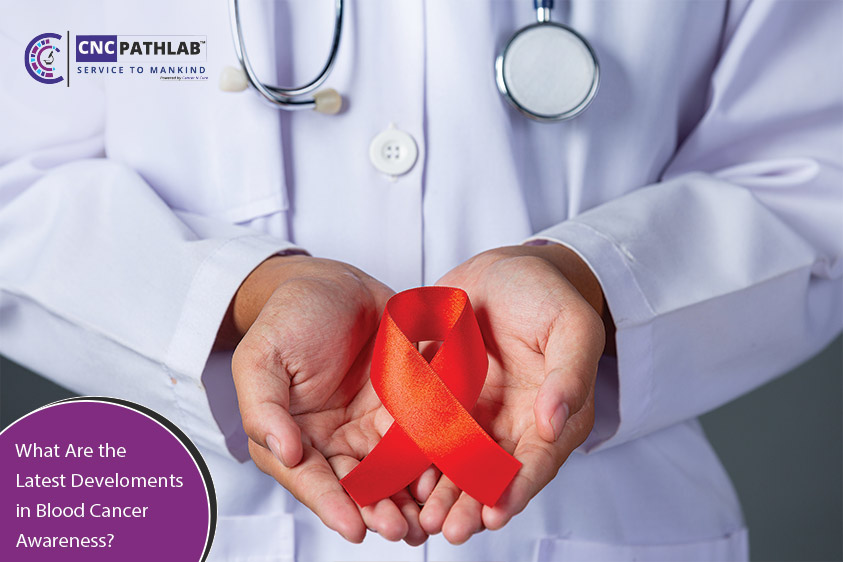What are the most common symptoms of an eye stroke?
When it comes to our health, being aware of potential warning signs is crucial. In the case of an eye stroke, early recognition can make a significant difference in preventing further damage and seeking appropriate medical attention. This blog post will delve into the most common symptoms associated with an eye stroke, helping you understand what to look out for and when it's essential to seek professional help. So let's explore these telltale signs together!
Signs of an Eye Stroke
Recognizing the Signs: Common Symptoms of an Eye Stroke.
Did you know that sudden vision loss, blurred or distorted vision, and diminished color perception can be signs of an eye stroke?
Experiencing sudden vision loss is a key symptom of an eye stroke. This can occur when the blood supply to the retina is blocked, leading to a rapid deterioration in vision.
Another common symptom of an eye stroke is blurred or distorted vision. If you notice that objects appear hazy or that straight lines seem bent, it may be indicative of this condition.
Diminished color perception can also be a sign of an eye stroke. Colors may appear faded or washed out, affecting your ability to perceive them accurately.
Floaters or flashes of light in your field of vision could indicate the occurrence of an eye stroke. These visual disturbances are caused by abnormal movement within the vitreous gel inside the eye.
In some cases, individuals experiencing an eye stroke may also feel pain or discomfort in their affected eye. This pain can range from mild irritation to severe ache and should not be ignored.
It's important to be aware and recognize these signs as they could indicate a potential eye stroke. If you experience any combination of these symptoms, seek immediate medical attention for prompt evaluation and treatment.
Sudden Vision Loss
Complete loss of vision in one or both eyes can be a symptom of an eye stroke. This sudden and severe vision loss is often accompanied by other symptoms such as blind spots and partial blindness.
- Complete loss of vision in one or both eyes
- Partial blindness
- Blind spots
Blurred or Distorted Vision
Difficulty focusing, objects appearing hazy or unclear, and double vision are common symptoms of blurred or distorted vision. This condition can be caused by various factors such as a retina issue or eye stroke. It is important to pay attention to these symptoms as they may indicate potential vision loss and should not be ignored. Seeking medical assistance promptly can help identify the underlying cause and prevent further complications.
Diminished Color Perception
Colors appearing dull or faded, difficulty distinguishing between shades and hues, and color blindness in certain areas are common symptoms of diminished color perception. This condition can be caused by issues with the retina and may result in vision loss or even pain. If you notice these changes in your visual experience, it is important to consult an eye specialist for a thorough examination and appropriate treatment.
Floaters or Flashes of Light
Seeing spots, specks, or lines floating in the field of vision is a common symptom associated with an eye stroke. These floaters are caused by debris in the vitreous gel inside the eye casting shadows on the retina. Similarly, "flashing lights" resembling lightning bolts can also occur during an eye stroke. This occurs when there is a disruption to the blood flow to certain areas of the retina, resulting in abnormal electrical activity and visual disturbances. Additionally, some individuals may experience a "curtain-like" shadow over part of their visual field as a result of reduced blood supply to specific areas of the retina.
Please note that these symptoms should not be ignored as they may indicate serious underlying issues such as retinal detachment or other conditions that can lead to vision loss if left untreated. If you notice any sudden onset floaters or flashes of light accompanied by pain or discomfort in your eyes, it is crucial to seek immediate medical attention for proper diagnosis and timely intervention.
Eye Pain or Discomfort
Sharp pain in the eye(s), irritation, and a gritty feeling are common symptoms of eye discomfort. These sensations can be caused by various factors such as dryness, foreign objects, or allergies. Additionally, sensitivity to light may accompany these symptoms, making it uncomfortable for individuals to be exposed to bright lights.
Other Symptoms to Watch for:
- Vision loss or sudden blurry vision in one eye
- Sensitivity to light and difficulty adjusting to changes in lighting.
Headache
Severe and persistent headache? Pain localized behind the eye? Worsening pain with sudden movement? These are common symptoms of an eye stroke. It is important to recognize these signs and seek medical attention immediately to prevent further complications.
Dizziness or Nausea
Sudden dizziness or vertigo, loss of balance or coordination, and feeling nauseous or vomiting are common symptoms associated with an eye stroke. These symptoms can be alarming and may indicate a serious condition that requires immediate medical attention. It is important to recognize these signs to ensure timely intervention and prevent further complications.
- Sudden dizziness or vertigo
- Loss of balance or coordination
- Feeling nauseous or vomiting
Facial Paralysis or Drooping
Weakness on one side of the face: One common symptom of facial paralysis or drooping is weakness that affects only one side of the face. This can make it difficult to move certain muscles and can result in an asymmetrical appearance.
Frozen expression on one side of the face: Another sign to watch out for is a "frozen" or immobile expression on just one side of the face. This lack of movement may give the impression that half of the person's face is not responding properly.
Mouth drooping on one side: In addition, individuals with facial paralysis may experience mouth drooping on only one side. This can make eating, drinking, and speaking challenging as proper muscle control is compromised.
Difficulty Speaking or Understanding Speech
Slurred speech, the inability to articulate words properly, and confusion when trying to understand spoken language are common symptoms of difficulty speaking or understanding speech. Slurring speech can make it difficult for others to comprehend what is being said, while an inability to articulate words properly hinders clear communication. Additionally, confusion in understanding spoken language can lead to misunderstandings and frustration in daily conversations. It is important to seek medical attention if experiencing these symptoms as they may indicate an underlying condition that requires treatment.
When to Seek Medical Attention
Recognizing the Signs: Common Symptoms of an Eye Stroke
- Sudden loss of vision in one or both eyes, especially if it occurs without any apparent cause, should prompt immediate medical attention.
- Other symptoms to look out for include blurry or distorted vision, difficulty seeing in low light conditions, and sudden onset of eye pain.
Immediately Consult a Doctor
Immediately Consult a Doctor if you experience any of the following symptoms:
- Sudden, painless loss of vision
- Blurred or distorted vision
- Partial or complete loss of visual field
These could be signs of an eye stroke, a serious condition that requires immediate medical attention. Don't wait, contact your doctor right away to get the proper diagnosis and treatment. Your eyesight is precious, so don't take any chances when it comes to sudden changes in your vision.
Visit the Emergency Room
Visit the Emergency Room if you experience a severe headache accompanied by eye pain, double vision, or difficulty speaking or understanding speech. These symptoms could indicate an eye stroke and require immediate medical attention to prevent further complications. Remember, it's better to be safe than sorry when it comes to your health, so don't hesitate to seek emergency care in these situations.
Follow-Up with an Ophthalmologist
Increased pressure within the eyeball, also known as glaucoma, is a serious condition that requires follow-up with an ophthalmologist. It can lead to optic nerve damage and vision loss if left untreated. Persistent floaters in your field of vision may indicate a retinal detachment or other underlying eye problem, making it important to consult with an ophthalmologist for further evaluation. Additionally, elevated blood pressure levels can have detrimental effects on the eyes and may contribute to various eye conditions such as hypertensive retinopathy; therefore, it is crucial to seek follow-up care from an ophthalmologist to monitor and manage these potential risks.
Prevention and Treatment
: Regular eye exams play a crucial role in early detection of eye strokes. By identifying any abnormalities, such as sudden vision loss or distorted vision, prompt treatment can be initiated to prevent further damage. Additionally, managing underlying health conditions like high blood pressure and diabetes through medication and lifestyle modifications significantly reduces the risk of experiencing an eye stroke.
Maintain a Healthy Lifestyle
Exercise regularly, incorporating both cardiovascular activities and strength training, to promote overall health and improve circulation. Eating a balanced diet consisting of fruits, vegetables, lean proteins, and whole grains provides the necessary nutrients for optimal eye health. Managing stress levels through mindfulness techniques or engaging in hobbies can help reduce the risk of eye strokes caused by hypertension or other stress-related factors.
Manage Underlying Health Conditions
- Control high blood pressure
- Monitor diabetes carefully
- Quit smoking
Controlling high blood pressure, monitoring diabetes carefully, and quitting smoking are essential steps in managing underlying health conditions. High blood pressure can increase the risk of an eye stroke, so it is crucial to keep it under control through medication, lifestyle changes, and regular check-ups. Monitoring diabetes closely is also important as uncontrolled blood sugar levels can damage the delicate blood vessels in the eyes. Finally, quitting smoking not only benefits overall health but also reduces the risk of eye-related complications by improving circulation and reducing inflammation. By actively managing these underlying health conditions, you can help maintain good ocular health and reduce the chances of experiencing an eye stroke.
Regular Eye Exams
Schedule annual eye exams to ensure the health of your eyes. Regular check-ups allow for early detection and treatment of any potential issues. If you notice any changes in your vision, don't hesitate to report them immediately to your eye care professional. By following their recommendations, you can maintain optimal eye health and prevent future complications.
Treatment Options
Immediate medical attention is crucial for optimal outcomes. Depending on the severity of the condition, treatment may involve medication to dissolve blood clots or surgery. In some cases, a rehabilitation program might be recommended to aid in recovery and restore visual function. It is important to consult with an eye specialist for personalized recommendations based on individual circumstances.


.jpg)

.jpg)
